Input interpretation

diazane
Chemical names and formulas
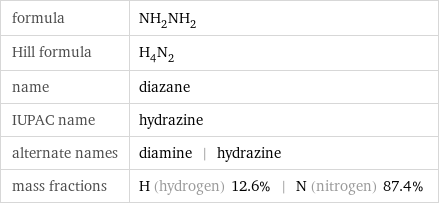
formula | NH_2NH_2 Hill formula | H_4N_2 name | diazane IUPAC name | hydrazine alternate names | diamine | hydrazine mass fractions | H (hydrogen) 12.6% | N (nitrogen) 87.4%
Lewis structure
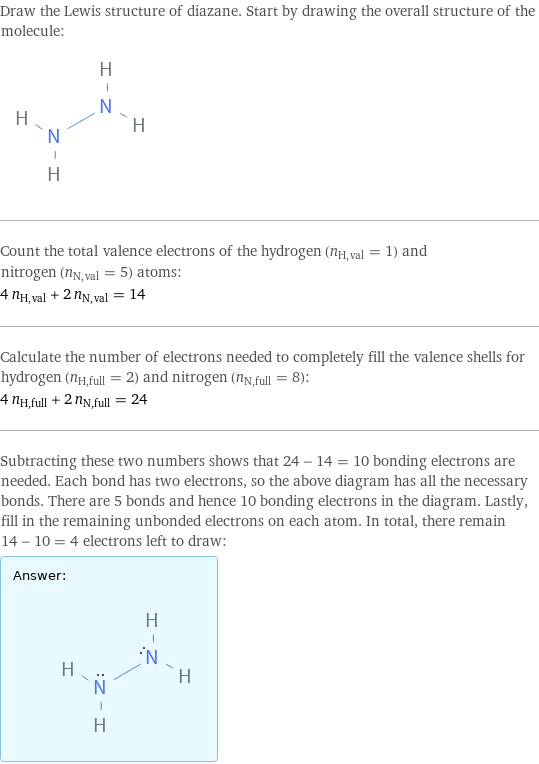
Draw the Lewis structure of diazane. Start by drawing the overall structure of the molecule: Count the total valence electrons of the hydrogen (n_H, val = 1) and nitrogen (n_N, val = 5) atoms: 4 n_H, val + 2 n_N, val = 14 Calculate the number of electrons needed to completely fill the valence shells for hydrogen (n_H, full = 2) and nitrogen (n_N, full = 8): 4 n_H, full + 2 n_N, full = 24 Subtracting these two numbers shows that 24 - 14 = 10 bonding electrons are needed. Each bond has two electrons, so the above diagram has all the necessary bonds. There are 5 bonds and hence 10 bonding electrons in the diagram. Lastly, fill in the remaining unbonded electrons on each atom. In total, there remain 14 - 10 = 4 electrons left to draw: Answer: | |
3D structure

3D structure
Basic properties
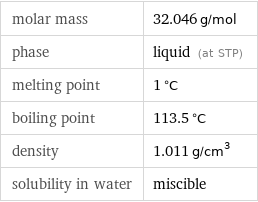
molar mass | 32.046 g/mol phase | liquid (at STP) melting point | 1 °C boiling point | 113.5 °C density | 1.011 g/cm^3 solubility in water | miscible
Units

Liquid properties (at STP)
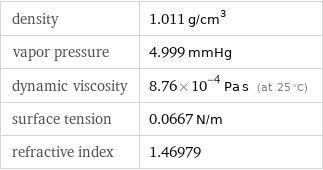
density | 1.011 g/cm^3 vapor pressure | 4.999 mmHg dynamic viscosity | 8.76×10^-4 Pa s (at 25 °C) surface tension | 0.0667 N/m refractive index | 1.46979
Units

Thermodynamic properties
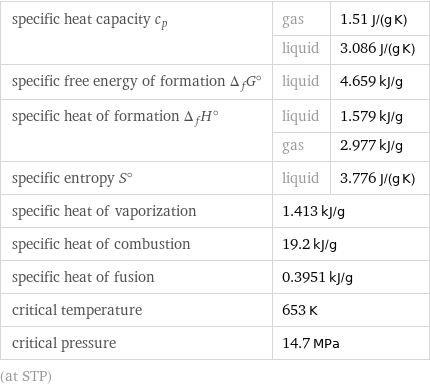
specific heat capacity c_p | gas | 1.51 J/(g K) | liquid | 3.086 J/(g K) specific free energy of formation Δ_fG° | liquid | 4.659 kJ/g specific heat of formation Δ_fH° | liquid | 1.579 kJ/g | gas | 2.977 kJ/g specific entropy S° | liquid | 3.776 J/(g K) specific heat of vaporization | 1.413 kJ/g | specific heat of combustion | 19.2 kJ/g | specific heat of fusion | 0.3951 kJ/g | critical temperature | 653 K | critical pressure | 14.7 MPa | (at STP)
Units
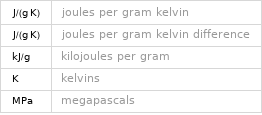
Chemical identifiers
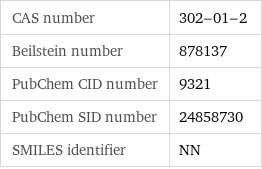
CAS number | 302-01-2 Beilstein number | 878137 PubChem CID number | 9321 PubChem SID number | 24858730 SMILES identifier | NN
NFPA label

NFPA label
Safety properties
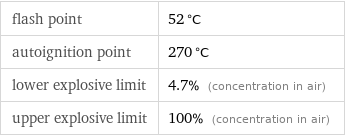
flash point | 52 °C autoignition point | 270 °C lower explosive limit | 4.7% (concentration in air) upper explosive limit | 100% (concentration in air)
Toxicity properties

threshold limit value | 0.01 ppmv
Units
